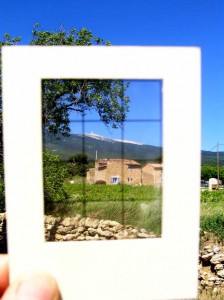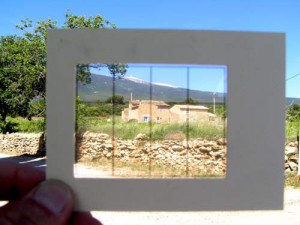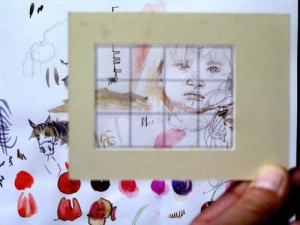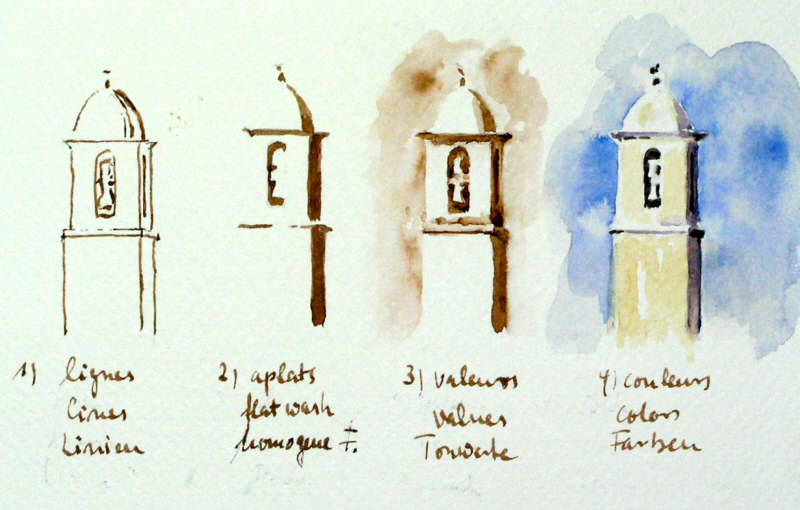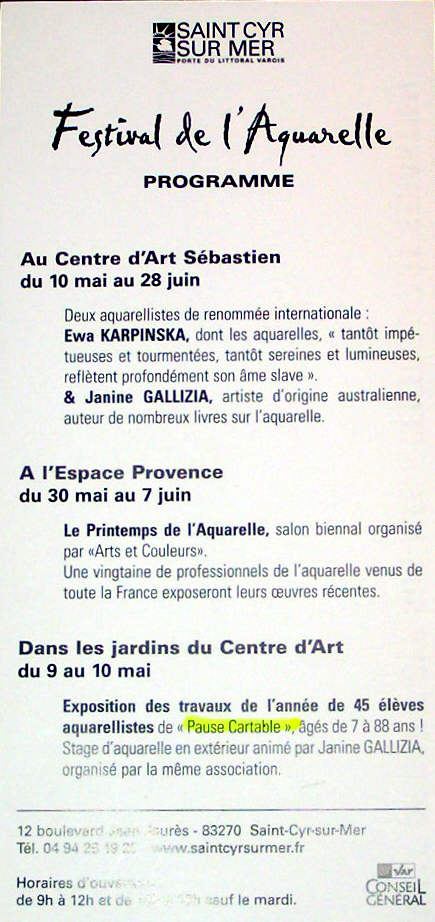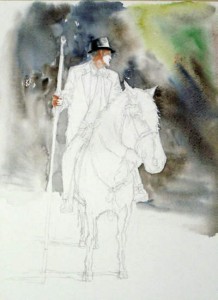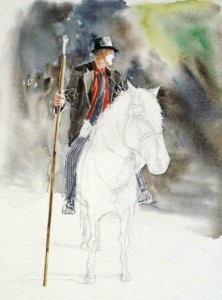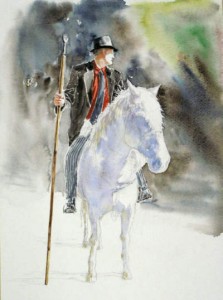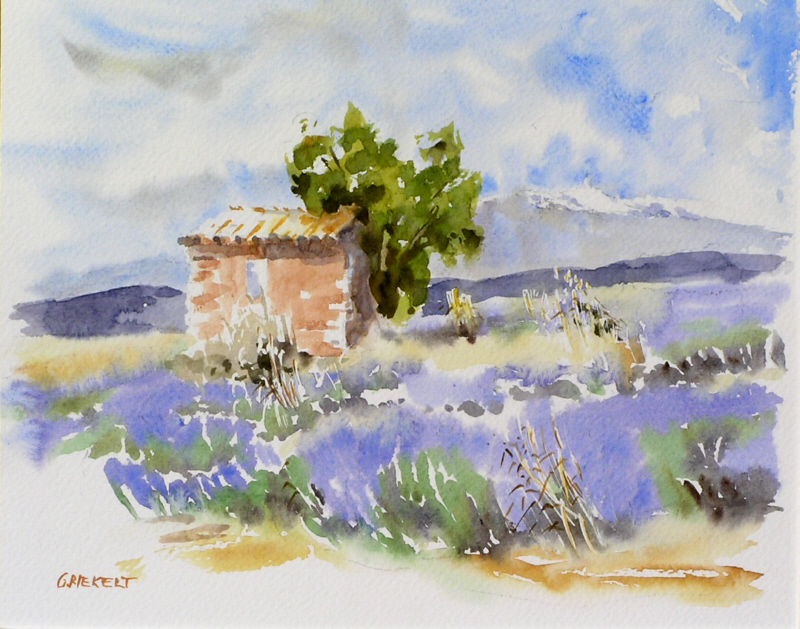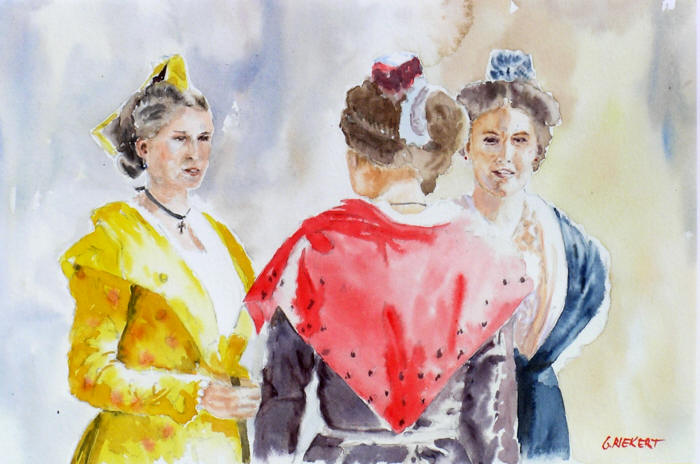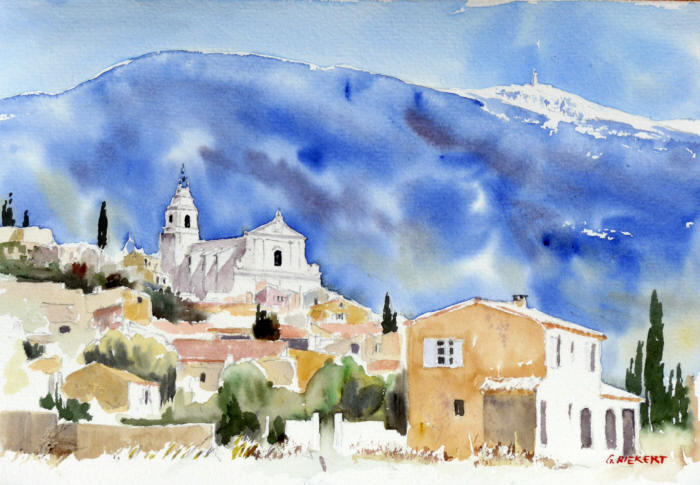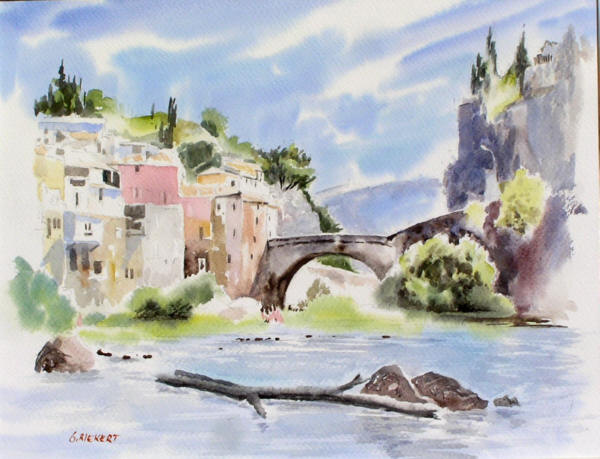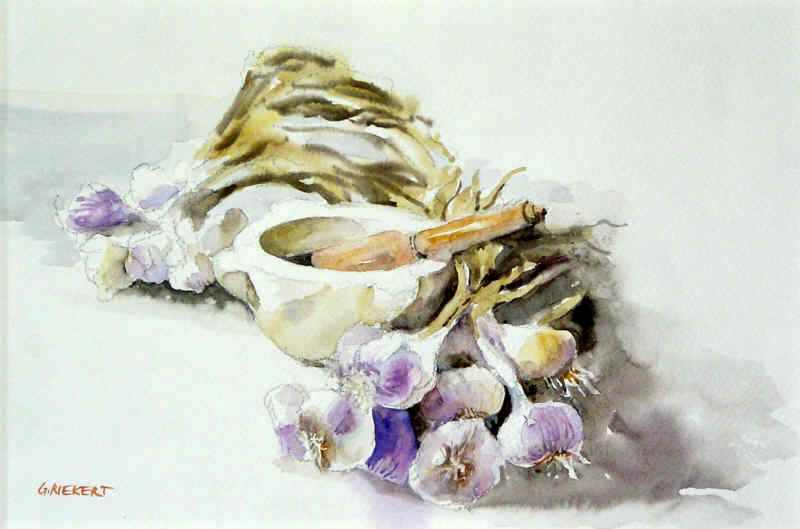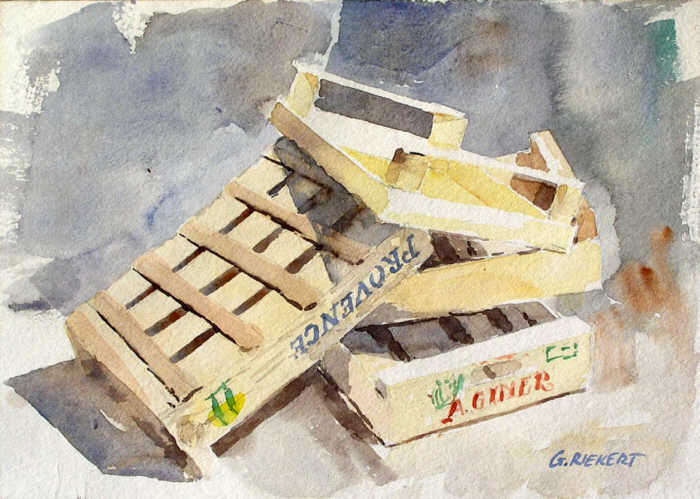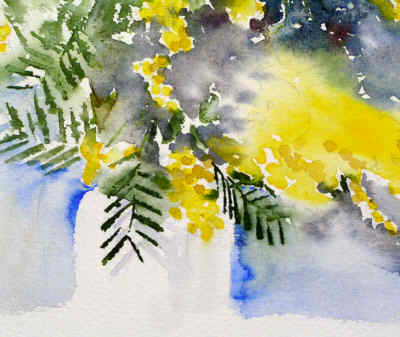Viseur – Viewfinder – Motivsucher
17 June, 2009
- En plein air l’aquarelliste est généralement déboussolé par la quantité d’objets. A l’aide d’un viseur le meilleur sujet à peindre est vite trouvé et placé au bon endroit. Il sert en plus à contrôler proportions et inclinaisons. Vous trouvez un fichier à télécharger ici. Plus qu’à imprimer sur un transparent de rétroprojecteur et coller derrière un petit cadre en carton (env. 9×12 cm – fenêtre 5,5×7,5). Bon pour 6 viseurs à distribuer en famille et aux ami(e)s du club des aquarellistes.
- The watercolor painter is often bothered with the quantity of interesting objects “en plein air.” A viewfinder can easily help to find the best subject to paint and to place it in the right position. Furthermore it can be used to control proportions and directions. You find a file to download here. Print it on a overhead transparency and paste it behind a cardboard frame (about 3½“ x 4¾“ – window 2 1/8 “ x 3“). The above file makes 6 finders, enough for you and your family or friends.
- Der Freiluftmaler ist von der Fülle interessanter Objekte oft verwirrt. Ein Motivsucher hilft da schnell, das beste Malobjekt zu finden und es an die richtige Stelle zu bringen. Außerdem kann man mit ihm Proportionen und Neigungen kontrollieren. Hier gibt es eine Datei zum runterladen. Einfach auf Overhead-Folie ausdrucken, hinter einen Passepartout aus Karton (ca. 9×12 cm – Fenster 5,5×7,5) kleben und schon hat man einen praktischen Finder. Der Ausdruck ergibt 6 Motivsucher, genug für die ganze Familie oder für die Malfreunde im Club.
Clocher de Mormoiron
04 May, 2009
- S’occuper à la fois du dessin, de valeurs tonales, de la composition et en plus de la couleur est souvent trop demandé aux aquarellistes débutant(e)s. Autant que nous sommes pressés par le temps car le papier et les couleur sèchent vite. Alors pourquoi ne se limiter de temps en temps à une seule de ces exercices. Les résultats peuvent être plus forts que si vous essayez de réaliser tout à la fois en panique.
- To deal at the same time with drawing, tonal values, composition and color is often too much for the (beginning) watercolour painter. Additionally time is running short as the paper dries quickly. So why not do this step by step? Try it and you will see that the results are better than do everything at the same time.
- Wenn man sich um Zeichnung, Tonwerte, Komposition und Farbe gleichzeitig kümmern soll, ist der Aquarellist (nicht nur der Anfänger) oft überfordert. Vor allem da sich das Ganze unter Zeitdruck abspielt, denn Papier und Farben trocknen schnell. Warum also nicht einmal die ganze Prozedur in einzelnen Schritten ausführen? Versuchen Sie es und Sie werden sehen, dass die Ergebnisse überzeugender sind.
Lavis de sépia sur papier aquarelle Fabriano, 20 x 30cm
- Si vous êtes dans le coin ne manquez pas les expos suivantes à Saint Cyr sur Mer (Var):
- If you are in the area don’t miss the following watercolor exhibitions in Saint Cyr sur Mer (Var):
- Falls sie in der Gegend sind versäumen Sie nicht die folgenden Aquarell-Ausstellungen in Saint Cyr sur Mer (Var):
avec entre autres Ewa Karpinska et Janine Gallizia.
Gardian à cheval
02 April, 2009
Aquarelle – watercolor on Fabriano 300g/m², 33 x 24 cm
- Étude d’après photo (fête de gardians à Arles). Un bon dessin est indispensable pour se familiariser avec cheval et cavalier. Quelques croquis couleurs préalable au pinceau ne sont pas du luxe. J’ai peint d’abord le fond librement qui va contraster avec personnage et animal. Il faut mouiller le papier avant de mettre la couleur (très foncé car l’humidité va la diluer d’avantage). Ensuite j’ai peint le gardian en essayant de créer quelques contours perdus (meilleur rattachement au fond). Comme je ne voulais pas mettre beaucoup de couleur en bas de l’aquarelle j’ai simplement ébauché les ombres et laissé les traits de crayon des jambes du cheval camarguais.
- Study from reference photo (fête of the Guardians at Arles). A careful drawing is necessary to get familiar with rider and horse. Some colour studies are useful. First I loosely painted the background to contrast with the detailed person and animal. Wet the paper before adding colour (very dark, as the water will dilute the paint).Then I painted the Guardian trying to create some lost edges (better integration of the person into the background). As I did not want to put much colour in the foreground of the painting, I just painted a hint of shadow and kept the pencil lines indicating the legs of the Camargue horse.
- Studie nach Foto (fête de gardians in Arles). Eine sorgfältige Zeichnung ist unerlässlich, um sich mit Ross und Reiter vertraut zu machen. Ein paar Farbstudien vorab sind auch kein Luxus. Ich habe zuerst den Hintergrund mit freien Pinselstrichen gemalt als Kontrast zu der präziser ausgeführten Person und dem Tier. Man muss das Papier anfeuchten bevor man Farbe aufbringt (sehr dunkel, da das Wasser sie ja wieder verdünnt). Dann malte ich den Gardian und versuchte einige „verlorene Konturen“ zu erzeugen (bessere Einbindung des Subjekts in den Hintergrund). Da ich im Vordergrund des Aquarells nicht viel Farbe haben wollte, malte ich die Schatten nur andeutungsweise und liess die Bleistiftzeichnung der Beine des Pferdes stehen.
